Application recommendations and
evaluation criteria for AMSAT-HC®
For the investigation and analysis of training, competition
and achievement tests (the ideal model for high performance
sports) – Stress guidance and control with AMSAT-HC®
A. General
The following implementation and explanations emerged as the result of an AMSAT Seminar held in Berlin from May 8-10, 2009. The main topic of the seminar dealt with the use of AMSAT diagnostics in performance and high performance sports. The lecturer, seminar leader and consultant was:
Prof. Dr. Ruev
From the State Teaching University of Moscow (Russia)
Faculty of sport sciences and leaders of the Institute . . .
Prof. Dr. Ruev has worked with the AMSAT diagnosis system for performance sports for over 15 years and is one of the “fathers” of this highly innovative medical product.
Within the framework of his activity as a physician, researcher and teacher his team, among other things, deals with:
- the evaluation and monitoring of the health condition before, during and after training stress within the framework of training cycles as well as in / after rest / recovery phase.
- advises, supports and controls the individual training plan for athletes of anaerobic and aerobic sports/disciplines.
As a result of this long-time activity and on the basis of the accumulated experiences and knowledge, certain test methods, test procedures and evaluation guidelines could be developed. The methods as well as the procedures and evaluation guidelines form excellent instruments for the trainer and physician for safe, reliable and reproducible evaluation of the individual health, fitness and training condition.
B. Test Methods
With the help of AMSAT diagnostics two test methods (measurement methods) can be applied for the investigation, control and evaluation of the current training condition and for the response to a training stress, as well as applied in the course of a combined annual training cycle.
The so called Gentsch Test offers excellent prerequisites for comprehensive evaluation of performance and should be carried out in the course of an annual training cycle, at the beginning of the new training year and afterwards always at the end of a single cycle. (As a rule there are 6 Gentsch Tests during a year.)
The Gentsch-Test is a type of measurement:
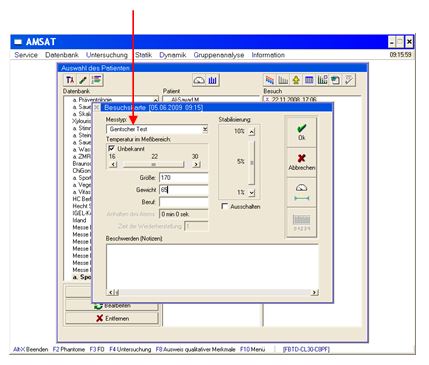
The short measurements are used for daily control, analysis and evaluation of the reaction to the respective training stresses.
C. Test Procedures
- Gentsch Test
1.1 This measurement method is a provocation test and was developed by doctors especially for the quick and reliable evaluation of performance.
1.2 The measuring process is as follows:
1.2.1Short measurement 1: it shows the basic measurement, after that
1.2.2 Exhale and stop the air in the exhaled state as long as possible, then inhale, further normal breaths, and then
1.2.3 Carry out short measurement 2 (= stress measurement) and after 1 minute pause
1.2.4 Carry out short measurement 3 (= control measurement)
The entire measuring process is laid down by the software and is automatic.
1.3 From this procedure 5 interpretation solutions result:
1.3.1 to 1.3.3. analogous to the previously mentioned measuring process from 1.2.1. to 1.2.3. Here the total results refer to the organ and organ system functions and refer to the condition of the tissue of the organs / organ systems represented.
1.3.4 The result: “Response” shows a difference as a percentage deviation between the measurements 1.2.1 and 1.2.2..
1.3.5 The result: “Recovery” shows a difference as a percentage deviation between measurement 1.2.2 and 1.2.3..
- The Short Measurement as a criterion for daily stress control
An evaluation pattern for measuring results of tests on people with permanently elevated physical stress (athletes in the high performance area).
For control (training, competition and stress controls) with athletes, who are prepared for long term and extensive planned intense physical stress (high performance athletes), the results of several measurements (short measurement with the AMSAT-HC®) are analyzed in the daily/training process in the following recurrent sequence: 5 to 6 single measurements (short measurements) are carried out everyday, all measurements occur in the standing position:
2.1 Day 1:
Short measurement 1
It is the last single measurement of the day before going to bed and is at least 1 hour after the meal is taken. It serves as a source measurement for the analysis of the late restoration phase before beginning the following training stages.
2.2 Day 2 – the following day
Short measurement 2
This basic measurement occurs as the first single measurement on the morning of the following day at least 1 hour after breakfast or at the latest 15 minutes before beginning training. This value forms the indicator of the basic condition before training begins and for the analysis of the expected reactions.
2.3 Short measurement 3
Single measurement after warm-up training = gives information about the quality of the “activation condition” of the body before the stress program(s).
2.4 Short measurement 4
Single measurement directly / immediately after the last high stress of the training stages
2.5 Short Measurement 5
Single measurement approximately 20 to 25 minutes after training. In the resting phase nothing should be eaten and the athlete should be resting.
If the comparison between short measurement 4 and 5 shows no difference, a low difference or even a deterioration, after 15 or 20 minutes another one is
2.6 Short measurement 6
carried out. The result of the preceding 5th measurement is cancelled and the 6th measurement (now actual 5) is substituted.
If the result of the 6th measurement also turns out again just like under 2.5. paragraph 2, the process is to be repeated after another 15 to 20 minutes.
As a rule such athletes need comparatively longer rest phases.
A comparison of the results of the different examinations makes it possible to get dependable statements about the state of the organism (the organs and the organ systems) during the different phases of the training process.
With the help of these test sequences and the results gained from them, an individual guidance and control of the training plan is possible with high reliability.
Graphic:
General Training and competition planning for track and field athletes
– Classification of the Gentsch Test and Short Measurement test procedures

D. Evaluation Criteria
In principle the following is valid:
- Organ System, 1st order
These systems react at first and are therefore crucial for the “anaerobic” athlete (speed, high-speed strength; in track and field events sprint, throw and jump), or respectively are significant for the evaluation
They include:
-
- Heart / Circulation
- Respiratory systems
- Gastrointestinal tract
- The large joints
- Spinal column
The analysis applies to the 5 previously mentioned systems as a group. Of course, it can also be looked at individually if necessary.
- Organ systems, 2nd order
This classification is directed exclusively to the aerobic and anaerobic reaction. The organ systems of the 2nd order, because of the time-wise secondary reaction, form the basis for the evaluation of “aerobic” athletes (all perseverance sports and disciplines).
They include all systems:
-
- Heart / Circulation
- Respiratory systems
- Gastrointestinal tract
- Urogenital area
- Ear, nose, throat area
- Visual organs
- Endocrine system
- Blood and metabolism system (spleen and liver)
- Large joints
- Spinal column
It is also valid here that the systems can be viewed as a group or individually.
E. Overview of evaluation guidelines
In all assessments the following basic statements can be evaluated as given:
- With aerobic athletes, the organ systems will shift into normal / output stage in the so called physiological optimum, or show a slight hypofunction.
- Anaerobic athletes in this stage are quite typically in hyperfunction (especially the heart / circulation system, gastrointestinal tract).
- Evaluation with short measurements
A comparison of the results of the different examinations, according to the following system (pattern) makes it possible to determine information about the state of the organism (the organs and the organ systems) during the different phases of the training process and to make a reliable statement about the reaction of the athletes to the set training (stress) programs.
1.1 Evaluation of the so called late recovery [phase] (2nd measurement minus 1st measurement)
Here measurement 2 (early measurement) is compared with measurement 1 (the last measurement of the previous day). This comparison permits conclusions about the compensation in the resting phase, and characterizes the shaping of the adaptive stabilization of the organism after physical stress. Ideally, the athlete should be perfectly recovered with the early measurement
Table 1 – approximate values – late recovery

1.2 Evaluation of the warm up phase (3rd measurement minus 2nd measurement
Here measurement 3 (immediately after the warm up) is compared with measurement 2. The result describes the response of the organ system to a physical pre-stress – a warm up – permitting conclusions about working ability / stress capacity of the athletes and serves as the evaluation of the quality and effectiveness of the warm up phase.
Table 2 – Evaluation criteria for the warm up [phase]

1.3 Evaluation of the stress / the training effectivity / effectiveness (4th measurement minus 3rd measurement) at the end of training
Here measurement 4 (immediately / directly after the last training stress) is compared with measurement 3. The result characterizes the adaptation of the organism to physical stress and serves as the evaluation of the response of the athletes to the training/stress stimulus, permitting conclusions about the planned and achieved training effectiveness, and shows whether power reserves are present or if possibly a condition of overloading exists.
Table 3 – Evaluation criteria for stress

1.4 Evaluation of the compensation ability or also of the recovery / response to the training stress (5th measurement minus 2nd measurement)
The sum of all physiological, biochemical and structural changes which guarantee the transition of the organism from a stressed condition to a resting condition (pre-stress condition) is summarized under the concept of recovery (response).
You distinguish three phases in the dynamics of recovery. Within these phases performance ability changes as follows:
1.4.1 Phase 1. Immediately after the exertion you observe a tendency toward recovery at the output level. This corresponds to the phase of reduced performance ability. Repeated stress during this phase trains the endurance.
1.4.2 Phase 2. In the further course the recovery grows more, it becomes an over-recovery, which corresponds to a phase of increased willingness to work. Repeated stress during this phase trains for performance.
1.4.3 Phase 3. A recovery at the output level approaches the output performance motivation as much as possible. Repeated stress in this phase is less efficient and merely maintains the training condition.
The evaluation of the response at the early recovery [phase] is identified by a comparison of the 5th measurement (approximately 20 to 25 minutes of rest after the last stress) with measurement 2 (early measurement) and shows as a value the possibility of evaluation of the compensation or recovery ability of the organism.
Table 4 – approximate values – early recovery

In the cases where a lower or negative response or an over stress is measured the previously described 6th measurement is necessary as a subsequent measurement after an interval of 15 to 20 minutes after the 5th measurement.
2. Graphic Example – Sprint
2.1. The “Ideal Situation” Response of a Sprinter to a Training Stress
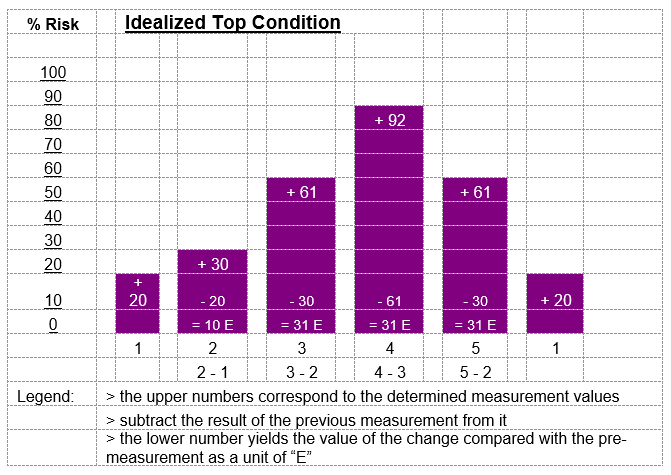
2.2. The possible normal situation of the response of a Sprinter

Gentsch Tests and short measurements make an individual training plan and stress control possible, and form two excellent instruments for a long term, controlled and verified performance structure. After the prevailing state of comparative measurements (heart rate and lactate) can be assessed, then these tests supplement the existing performance diagnostics very well. An advantage of the AMSAT supported diagnostics lies in the mobile application directly at the respective training and competition locations.
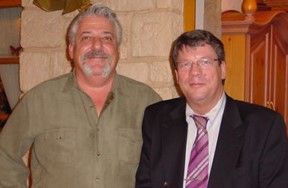
Dr. Brian L. MacCoy and Mr. Peter
Thurmann from Holistic Concepts
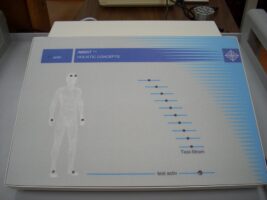
AMSAT-HC®
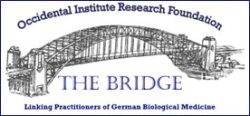 A Confidential Translated Article for Members
A Confidential Translated Article for Members
From THE BRIDGE Newsletter of OIRF
Published June 2009
This article was manufacturer produced
Author Prof. Dr. Ruev, Moscow, Russia
From an article in German from Holistic Concepts, Germany
Machine Translation by SYSTRAN, Lernout & Hauspie, LogoMedia & Promt
Translation & redaction by: Carolyn L. Winsor, OIRF
© Copyright 2009, Prof. Dr. Ruev and Holistic Concepts, Berlin, Germany


